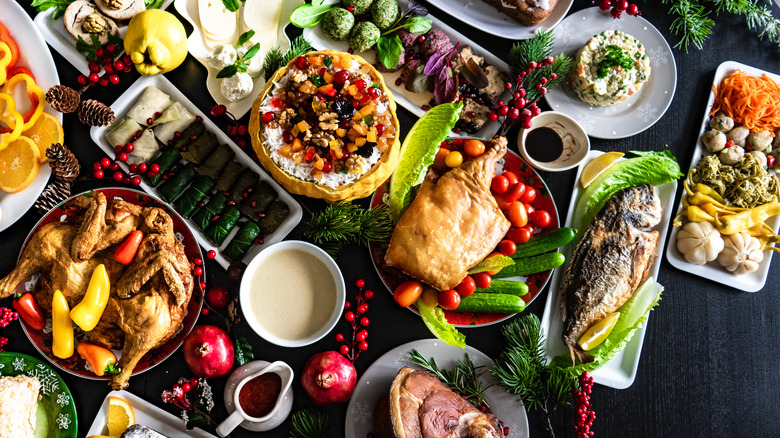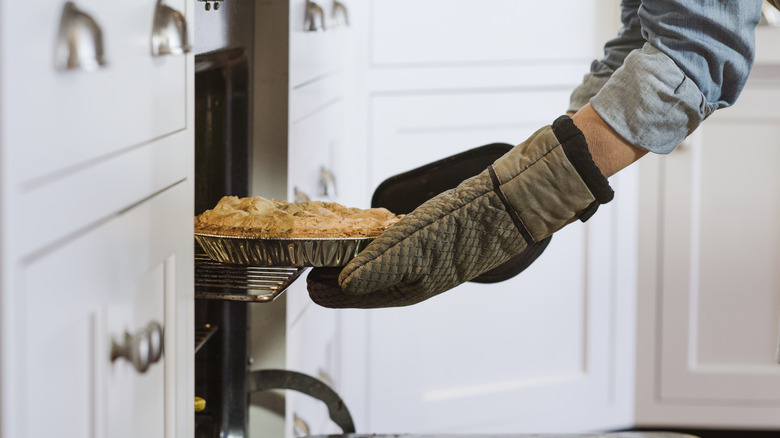The Temperature Trick For Cooking Multiple Dishes Together In Your Oven
We've all been in a time crunch before — needing to use the oven for multiple dishes at once — and knowing how to make the best use of your oven space will be a lifesaver when prepping dishes for a large crowd. Ovens come with multiple racks, so cooking several things at once is not a revolutionary concept — but how do you do it the right way? The main trick is finding the average cooking temperature that represents the sweet spot that will take care of every dish you have in the oven without over- or under-cooking any of them.
Luckily, the average temperature is easy to calculate. Add up the different cooking temperatures of your dishes, and then divide that sum by the total number of different temperatures. A mistake you might make here is dividing the sum by the number of dishes, which is incorrect. Two dishes could have the same cooking temperature, so always divide by the number of different temperatures you've added up.
For example, let's say you're simultaneously cooking two dishes that bake at 300 degrees Fahrenheit and another that bakes at 400 degrees Fahrenheit. First, add up the two temperatures: 300 + 400 = 700. Then, divide 700 by two (the number of different temperatures included). The result is 350, which is the average temperature. Therefore, you'll bake all three dishes simultaneously at 350 degrees Fahrenheit. Easy-peasy!
Use a convection setting for even heat distribution and watch the timing
Convection settings are the best choice when cooking multiple dishes at once because the fans evenly distribute the air inside the oven. The hot air circulates throughout the cooking process, so your multiple meals have a better chance of cooking evenly. Remember the temperature rule for cooking any recipe in a convection oven and take 25 minutes off baking time, and don't overcrowd the oven!
If you're using a traditional oven, rotate your dishes halfway through the baking process so they cook evenly. What's baking on the top rack of a traditional oven will usually cook faster than what's baking on the bottom rack. Just switch the dishes halfway through and pay attention to the meals as they cook. If you're unsure whether the meal is done, using a meat thermometer is always a good idea. As you adjust the temperature, you'll also need to adjust the timing. Meals cooked together in a traditional oven need a bit more time, so leave them in the oven 5 to 10 minutes longer than the recipe calls for, or (if you want to get very specific) add 15% to the cooking time.
Finally, be mindful of the different flavor profiles. When multiple dishes are cooking together, the hot air can enhance and mix their flavors. Bake sweet things separately from the savory ones to avoid your red velvet cupcakes tasting like crispy chicken — unless, of course, that's what you're going for.

